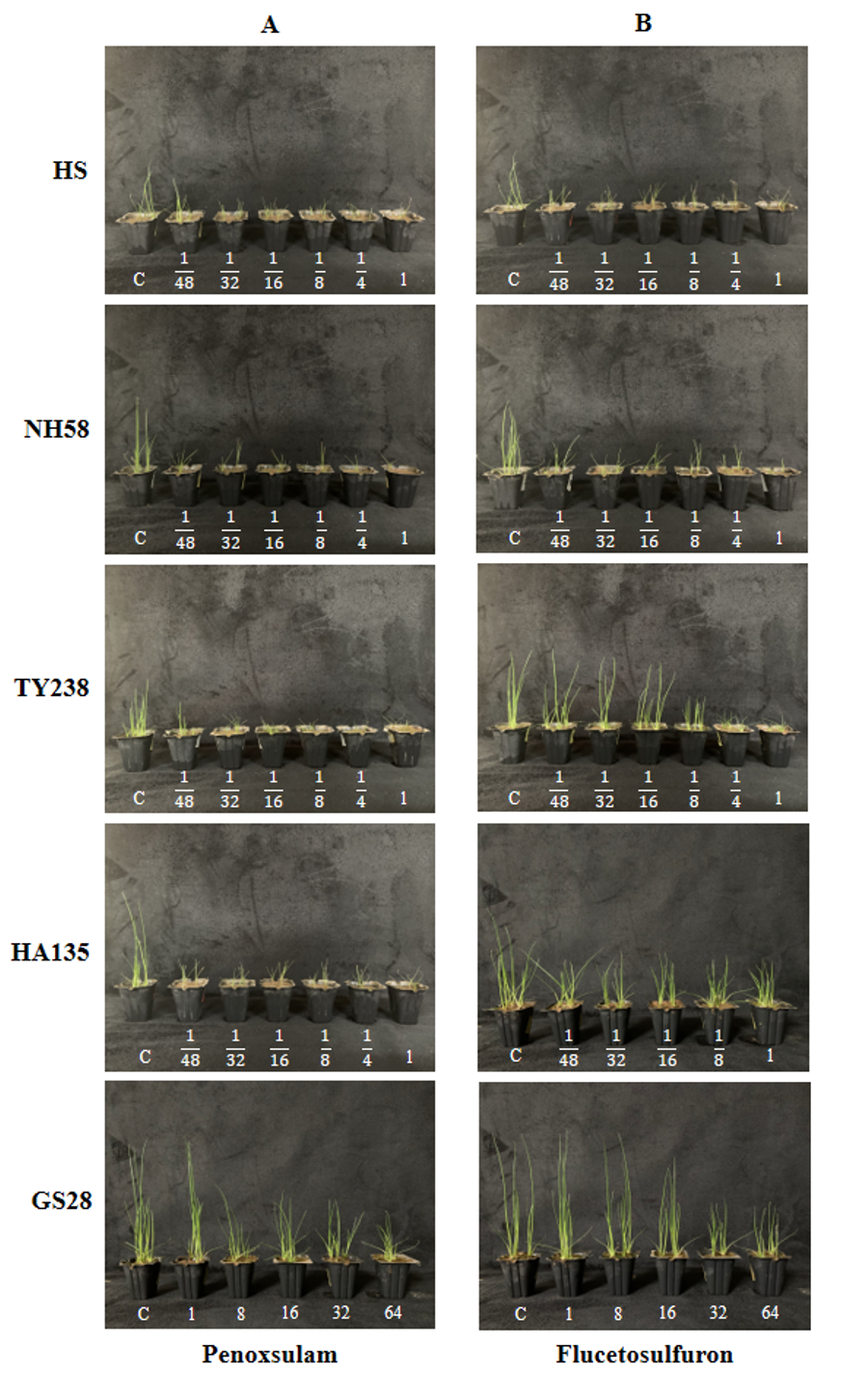Abstract
This study was conducted to determine the degree of resistance and resistance mechanism to acetolactate synthase (ALS) inhibiting herbicides in
Figures & Tables

Fig. 1.Growth response of biotypes 14 days after penoxsulam (A) and flucetosulfuron (B) treatment. C: Control; 1/48: 0.625 g; 1/32: 0.9375 g; 1/16: 1.875 g; 1/8: 3.75 g; 1/4: 7.5 g; 1: 30 g; 8: 240 g; 16: 480 g; 32: 960 g; 64: 1920 g a.i. ha.


